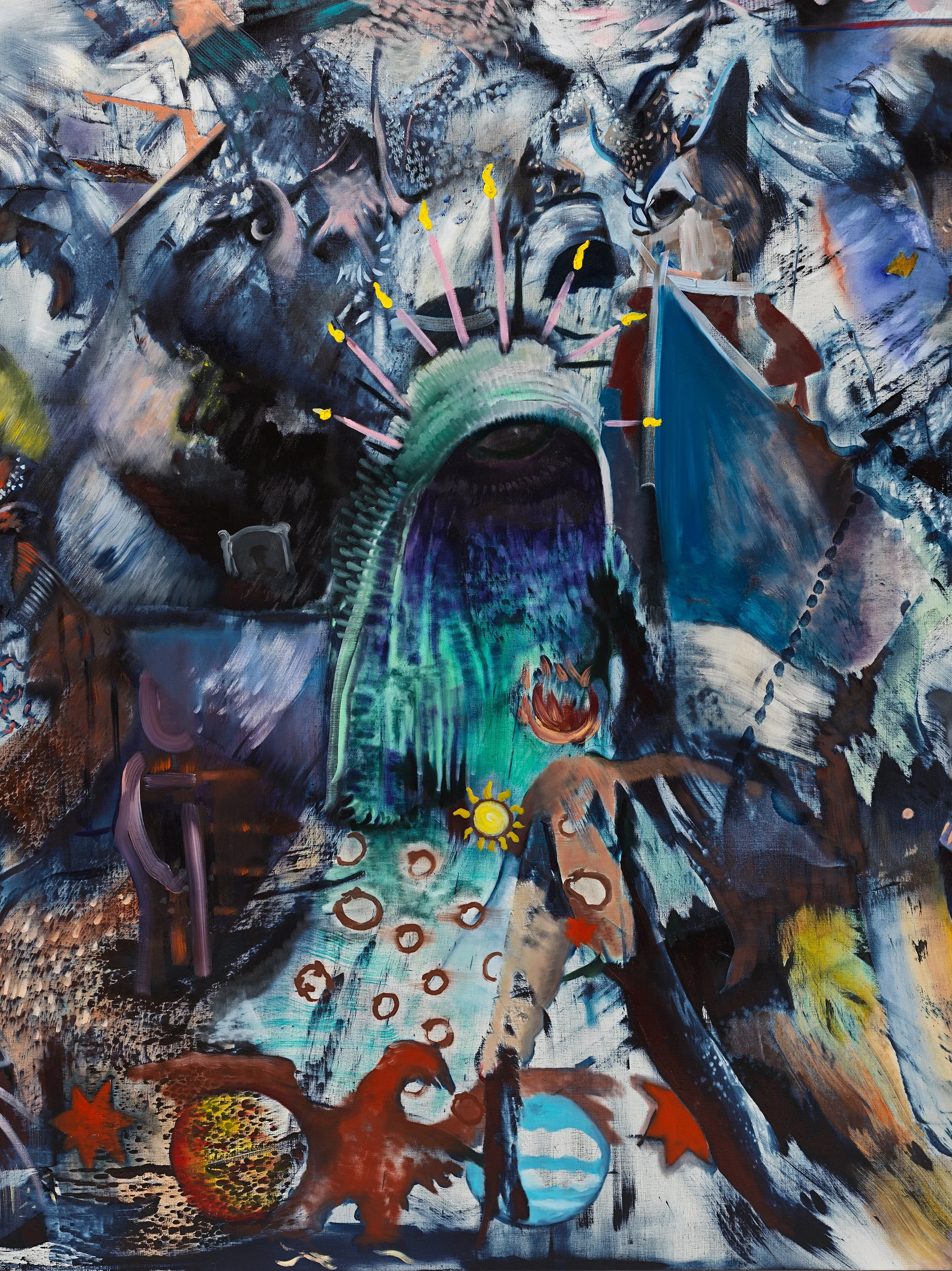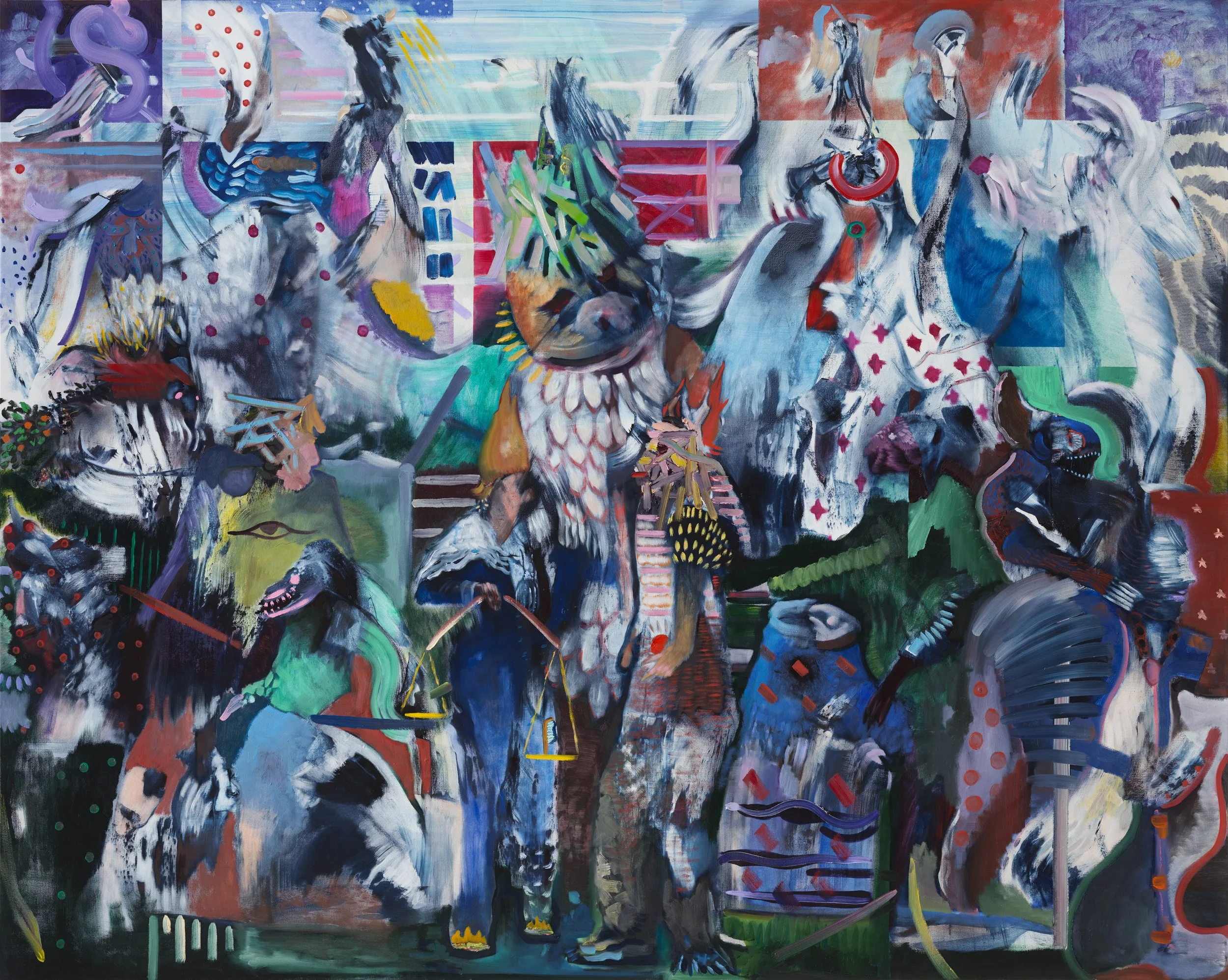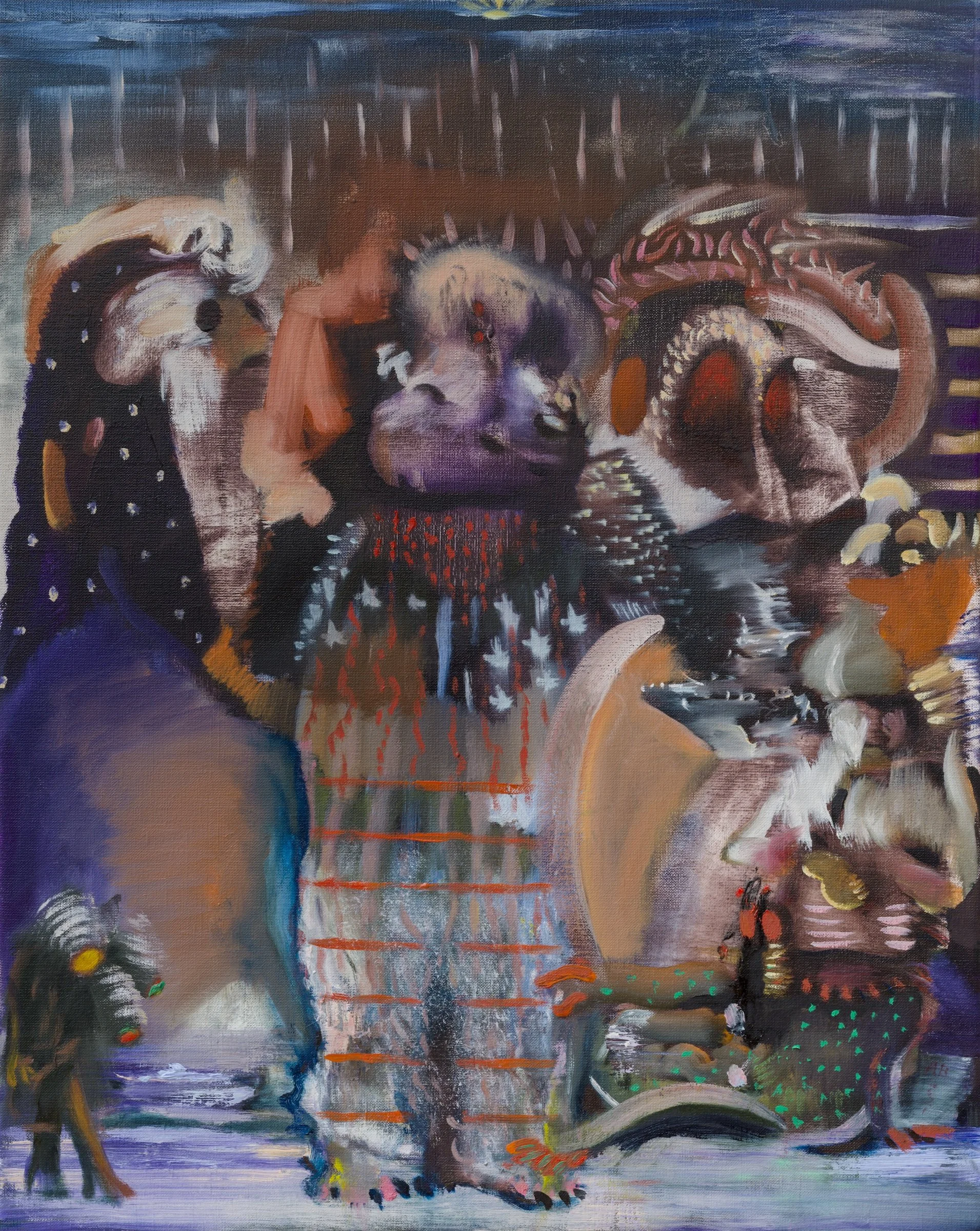An Appreciated Conversation with Ali Bansiadr
Photo credit: Diego Flores
Ali Banisadr is an Iranian visual artist who lives and works in Brooklyn, New York. He received his BFA from the School of Visual Arts and his MFA from the New York Academy of Art.
In 2021, a solo exhibition of the artist’s works was installed in dialogue with the permanent collection of the Museo Stefano Bardini in Florence, Italy; Banisadr was also invited to create a group of site-specific paintings for the exhibition, inspired by Dante’s Divine Comedy and installed in the nearby Palazzo Vecchio. Other solo exhibitions have been staged at the Benaki Museum, Athens, Greece (2020); the Wadsworth Atheneum Museum of Art, Hartford, CT (2020); Gemäldegalerie, Academy of Fine Arts, Vienna, Austria (2019); and Het Noordbrabants Museum, Den Bosch, Netherlands (2019). His work has also been included in significant group exhibitions, including at the Heydar Aliyev Center, Baku, Azerbaijan and the Venice Biennale (2013-14) and Prague Biennale 6 (2013). Gallery shows include Victoria Miro, Thaddaeus Ropac, kasmin amongst others..
Banisadr's work is in the museum collections of Albright- Knox Art Gallery, Buffalo, The British Museum in London, The Metropolitan Museum of Art in New York City, Los Angeles's Museum of Contemporary Art, Centre Georges Pompidou, Paris, Los Angeles County Museum of Art, Wadsworth Atheneum, Philadelphia Museum of Art, The artist also features in private collections such as The Olbricht Collection in Germany, Francois Pinault Foundation in Italy, London's The Saatchi Gallery, Vienna's Sammlung Essl, and The Wurth Collection in Germany.
I had the pleasure of asking Ali about what he thinks is the most challenging concept behind creating his large-scale signature pieces, how his childhood upbringing inspires his creative process, how he chooses colors, and so much more.
The "Return to Mother" display is at the Princeton University Art Museum in the Mathey College Common Room and is on view until October of this year.
UZOMAH: What makes art the method you chose to communicate yourself through, and is there any defining moment that made you want to become an artist?
ALI: It might sound like a cliché, but I am going to say that maybe Art chose me. When I was about seven or eight years old, we did a European trip, and one-stop was seeing the Sistine Chapel at the Vatican. Michelangelo's work there mesmerized me and went inside of me, unlike anything I had ever experienced. So maybe this was the moment. Although I made art before this, I think it made me realize what art is capable of doing to you.
Return to Mother, 2022, Oil on Linen, 82x180 inches / and a detail
U: You create large-scale pieces; what is the most challenging concept behind this method?
A: When I begin a painting, I just dive in, I really don’t know where the journey will take me, therefore during the process of developing the painting, there are times when I am totally lost and unsure about the direction, it is about being patient and waiting to learn where the painting wants to go but at the same time, this is the most exciting part about it too since there is always a surprise. Because they are mostly large-scale, I feel like a conductor in a symphony and have to make sure everything is in tune but also unique in its own development.
U: How do you choose colors for each artwork?
A: I make my own colors which are based on a mood I am looking to create for the beginning stage of the painting. From this comes other colors as I work; I am very sensitive to the power of color. There are sounds and vibrations that I hear from colors which enable me to know which combination of colors makes sense.
Weighing of the heart, 2023, Oil on Linen, 48x60 inches
U: How have your childhood memories of growing up in Tehran during the Iran-Iraq war and the Islamic Revolution influenced your Art and creative process?
A: For sure, but my work is not about a particular time or event; there are elements of memory that come in and out of the work. The key is to try not to make something look real but to make it feel real in paint. Personal and collective Memory travel in and out of my mind while working, but it is the combination of memory and visual symbols which can transmit like WIFI floating in the air, which is exciting for me. You just have to be in a place within yourself to be able to catch these waves with your antennas.
Queen of the night, 2022, Oil on Linen, 82x120 inches
U: How can art best address social and political issues?
A: When I look at Picasso’s Guernica, I don’t necessarily think about that particular event, but I think about universal human suffering. I can apply something Picasso felt at the time with the impact of war within the time he painted it and apply it to my own experience of war, which I experienced in my own life, or any other suffering for that matter. I think Art can address issues in this way by showing how it felt at the time to experience certain political and social issues and how as a human being, in a very honest way, it felt instead of being propagandistic. I am always suspicious of Art that sides with certain ideologies fully. I guess I am somewhat of a skeptic.
U: How do you incorporate personal history, art history, and the history of the times in your artwork?
A: My paintings are the reflection of the way I think and feel, the work is an amalgam of what I process as a human being in this world, but it is also about having access to different dimensions which you can bring into the work. This is developed through my research process, a huge part of my practice. Let’s say there is a topic in current times that I am interested in; I like to research this in history, see visual works which have been made to address the issue, read books about the topic, and dig into myself to see how I have experienced it. So, the work I will make will naturally result from this research which exists now in my consciousness, and also being open to what my subconscious wants to say about it through symbols.
He Who Saw the Deep, 2021, Oil on Linen, 16x20 inches
U: Are there any future or projected projects you are working on that you are excited about?
A: Currently, I have my largest painting to date (“Return to Mother,” 2022, Oil on Linen, 82x180 inches) installed at Princeton University Art Museum, which will be up for a year. I am really happy about this because since I graduated in 2006, I never lost the drive to keep learning, researching, and being a student.
I am also working towards a solo show at Victoria Miro Gallery in London this October, which I am excited about.
For more information about Ali’s artwork, please visit his site. Also please follow him on Instagram.




